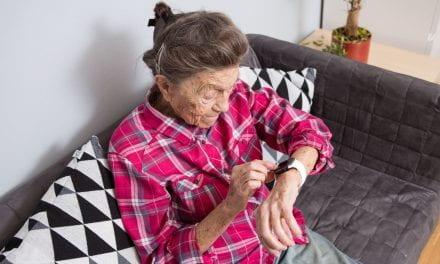Prevention and Treatment: Protecting New Mothers When They Are Most Vulnerable
Opioids and New Moms: A Hidden Problem
Downs said that of the approximately four million women who give birth in America each year, about 1.2 million of these women have a cesarean section. For women with overweight and obesity, cesarean section is the most common way to give birth. After a baby is born, women who have a cesarean are generally prescribed opioids for post-delivery pain management.
A study by Osmundson and colleagues showed that 75 percent of women who have a cesarean delivery were left with about 10 unused tablets of five-milligram oxycodone per patient (2017).
Pregnant Women: Research Needed
Worldwide, the number one reason that people go to the hospital is for childbirth. Over the last few decades, the rate of births by cesarean section has climbed dramatically in the United States. Today, about 30 percent of women who give birth in the United States have a cesarean section. For women with overweight or obesity, cesareans are even more common.
“It really hit me when I was in my doctoral training,” said Downs. “There was so little research that had focused on the psychological and behavioral health of pregnant women. These women are often ignored in research studies.”
Downs decided to focus her research career on pregnant women, leveraging her unique dual appointment in both the College of Health and Human Development and the College of Medicine to forge interdisciplinary collaborations.
Understanding What is Happening to New Mothers
When Downs began this research in 2017, there were few, if any, professional guidelines available for pain management following childbirth, and almost no research related to prescribing opioids to new mothers. In 2018, the American College of Obstetricians and Gynecologists and Commonwealth of Pennsylvania released guidelines for prescribing opioids to new mothers.
With a team of collaborators from the College of Health and Human Development, Penn State College of Medicine, Penn State Milton S. Hershey Medical Center, and Geisinger, Downs gathered data on medical providers’ beliefs about pain management after childbirth.
“The range of prescriptions illustrates how important it is to standardize prescription practices after delivery” explained Downs.
The researchers also asked if the physicians screen patients for potential substance abuse problems prior to the prescription of opioids. Screening tools are short questionnaires that have been proven to identify people who would be at risk if they used opioids for pain management. Screening tools are nationally available, and some can be completed in as little as two minutes. Though 50% of physicians said screening tools would be helpful, 92% were not using a standard screening tool when making prescription decisions.
Another insight of the research is that most providers (71%) believed that non-pharmacological therapies like heat/cold packs, mindfulness, or imagery should be used whenever possible to manage pain after childbirth. The doctors, however, believed that their own lack of experience with these therapies and patients’ reservations about the therapies were barriers to using pain management strategies other than medication.
Downs said “These findings highlight that practical strategies are needed to encourage the use of guidelines and opioid screening tools. Also, we must educate providers and patients about the benefits of non-pharmacological pain management options to reduce opioid exposure and misuse after childbirth.”
How to Protect New Mothers
Over the past year, both the Penn State Hershey Medical Center and Geisinger decided to standardize the use of opioid screening tools at delivery.
This will help vulnerable women avoid relapse or potential addiction. Furthermore, both facilities are exploring how to implement the use of a standard prescription for pain management following delivery. Doctors will still have the ability to change the prescription based on their patient’s individual needs and situation, but the implementation of best practice recommendations will keep women safer.
“If there is no standard screening tool used prior to making those prescription decisions,” Downs explained, “any history of substance use disorder—alcohol, marijuana, prescription opioids—may not be considered when making decisions about how to manage pain. Even though providers are well-trained and have years of clinical insight for making prescription decisions, using standard screening tools and prescribing guidelines to make decisions about pain management after childbirth will improve the quality of care that is delivered to women during this extremely important and vulnerable time.”
What is Next?
Downs and her research team are developing a prevention intervention that focuses on both patient care and provider education to reduce exposure to prescription opioids after childbirth and promote the use of non-pharmacological pain management therapies for new mothers.
In addition, the researchers are also analyzing data from over 28,000 birth records from the Milton S. Hershey Medical Center and Geisinger to understand individual patient characteristics (for example, whether patients have histories of substance use disorder, depression, and/or other health issues) that may help to identify women at risk for opioid misuse and abuse after childbirth.
“By screening patients, we can identify women who would be at risk from an opioid prescription and prevent some of these problems from ever happening. What is more, if a woman has a history of substance abuse or a current substance abuse problem that she wants to address, but she does not know how to start the conversation with her doctor, screening can help her find treatment or maintain her recovery.
“People want to believe that new moms exist in a blissful wonderland with their babies. But those women’s bodies are changing, their hormones are changing, their sleep patterns are changing, their social lives are changing: everything is changing. New mothers are very, very vulnerable. Through the use of standard screening and prescription guidelines, we can reduce the rate of substance use, misuse, and abuse among new mothers and improve life for them and their families.”
This research is funded by the Penn State Clinical and Translational Science Institute, the SSRI, and the CCSA.
Sources
Bateman B.T., Franklin J.M., Bykov K., Avorn J., Shrank W.H., Brennan T.A., et al. Persistent opioid use following cesarean delivery: patterns and predictors among opioid naïve women. Am J Obstet Gynecol 2016;215(3):353.
Downs, D. S., Pauley, A. M., Leonard, K. S., Satti, M., Cumbo, N., Teti, I., et al. Obstetric physicians’ beliefs and knowledge on guidelines and screening tools to reduce opioid use after childbirth. Obstetrics & Gynecology, 2021;137(2):325-333.
Osmundson S.S., Schornack L.A., Grash J.L., Zuckerwise L.C., Young, J.L., Richardson M.G. Postdischarge opioid use after cesarean delivery. Obstet Gynecol 2017;130: 36-41.





